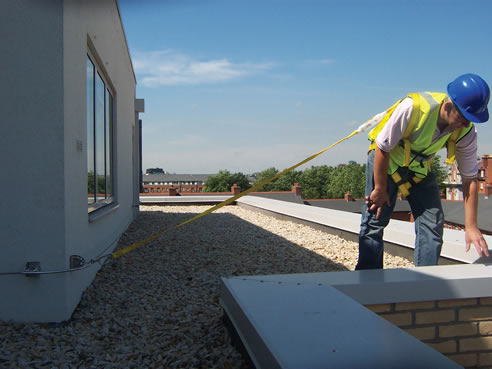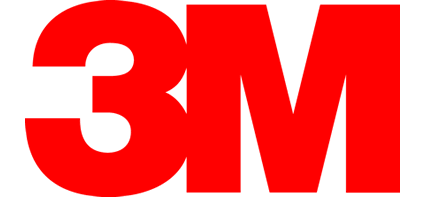Minimising Risks with Fall Prevention Systems from 3M Safety
Working to the Height of Safety
Introduction Fully compliant fall prevention systems must be installed on both commercial and residential sites to protect workers from the myriad of dangers associated with working in such environments, and although the manufacturing of such systems within Australia is heavily regulated, the installation process is not. A number of standards have been developed to ensure a high degree of compliance regarding work safety at height, however as the industry is largely self-regulated¹, serious issues regarding the correct installation of these life-saving systems can be compromised. At present, there are no specific training requirements for installers of fall prevention equipment, other than the general need for 'competence', nor are there any formal training courses available². In an industry prone to risk, the need for the highest standard of safety equipment that has been correctly installed by extensively trained professionals is paramount. Safety is not an area that the industry can afford to compromise on.
Statistics on Safety Over the same period, 13,735 successful workers compensation claims for serious injury or illness were claimed, 26 percent of which related to falls, trips and slips and almost all of these claims involved either falls from height, or falls on same level4. The data, however, does not specify which proportion of the accidents were related to, or caused by fall prevention equipment, design or installation failures. In September 2013, Peak industry body for fall protection, the Working at Height Association (WAHA) released a report highlighting the urgent need for regulatory intervention due to the alarmingly high level of unsafe installations of height safety equipment. The report listed the findings of a three-month audit of commercial and industrial workplaces, which found widespread systematic failure of installations relating to anchors and static lines, guard railing and fixed ladders. The industry body's findings necessitate the urgency in which the situation must be addressed. A lack of comprehensive training in relation to height safety installations can truly be the difference between life and death for an employee.
Practical Compliance Failure to provide a safe workplace environment can also potentially lead to costly lawsuits and jail time if negligence is proven. The quality of the componentry used, together with the workmanship of the systems themselves are both critically important factors to achieving a safe and productive workplace. However the equipment also needs to be designed so that workers can complete their job without too many physical restrictions caused by the fall prevention systems themselves - they must enable freedom of movement. Restrictive systems can result in reduced productivity, leading to higher costs, and the compromising of the project itself due to the sheer inability for a worker to physically complete a job safely. In addition, the challenging nature of some residential and commercial structures, also mean that fall prevention systems need to be designed to ensure the safety and structural integrity of both old and new buildings. This is where energy absorbing capability is paramount. Energy absorbing dissipation systems enable application to weak and lightweight structures while ensuring maximum safety for employees. Another point to note is that adequate fall prevention equipment applies to all construction sites whether commercial or residential. Safety measures are required wherever there is a risk of injury, irrespective of fall height. The risk of any fall must be actively managed by respective state laws5.
The Solution 3M Safety design and manufacture a comprehensive range of fully compliant, fully customisable, ISO 9001-2000 certified, fall arrest and fall protection systems for commercial and residential roof applications. They also provide industry leading installation and training services throughout the lifetime of their equipment to ensure the safest possible environment for your employees. Designed to meet the requirements of both the Australian and New Zealand construction industries, 3M Safety's fall prevention systems significantly minimise risk, while maximising safety, productivity and peace of mind.
REFERENCES
|
1800 024 464 Building A, 1 Rivett Rd, North Ryde, NSW, 2113
|


 Fall Arrest Anchorage Connectors from 3M
Fall Arrest Anchorage Connectors from 3M Commercial & Industrial Fall Protection
Commercial & Industrial Fall Protection Personal Protective Equipment Trade-Up
Personal Protective Equipment Trade-Up Safety Gear and Accessories Sydney from
Safety Gear and Accessories Sydney from Worker Health and Safety Video | 3M
Worker Health and Safety Video | 3M Truss Mounted Roof Anchor | 3M Safety
Truss Mounted Roof Anchor | 3M Safety Full Body Harness Range | 3M Safety
Full Body Harness Range | 3M Safety Portable Roof Anchor by DBI-SALA | 3M
Portable Roof Anchor by DBI-SALA | 3M 5-Piece Hoist System for Confined Space
5-Piece Hoist System for Confined Space ExoFit STRATA™ Harness Video | 3M
ExoFit STRATA™ Harness Video | 3M Full Body Safety Harness ExoFit STRATA |
Full Body Safety Harness ExoFit STRATA | Mechanical Prusik Rope-Mate™ | 3M
Mechanical Prusik Rope-Mate™ | 3M Comfort Harnesses for Fall Protection |
Comfort Harnesses for Fall Protection | Personal Self Retracting Lifelines | 3M
Personal Self Retracting Lifelines | 3M Fall Protection for Tools Video | 3M
Fall Protection for Tools Video | 3M Extended Length Self Retractable
Extended Length Self Retractable Engineered Mobile Access Systems | 3M
Engineered Mobile Access Systems | 3M Double Stop Descenders | 3M Safety
Double Stop Descenders | 3M Safety Sealed Self Retrating Lifelines
Sealed Self Retrating Lifelines Rope-Safe Rope Grab | 3M Safety
Rope-Safe Rope Grab | 3M Safety
